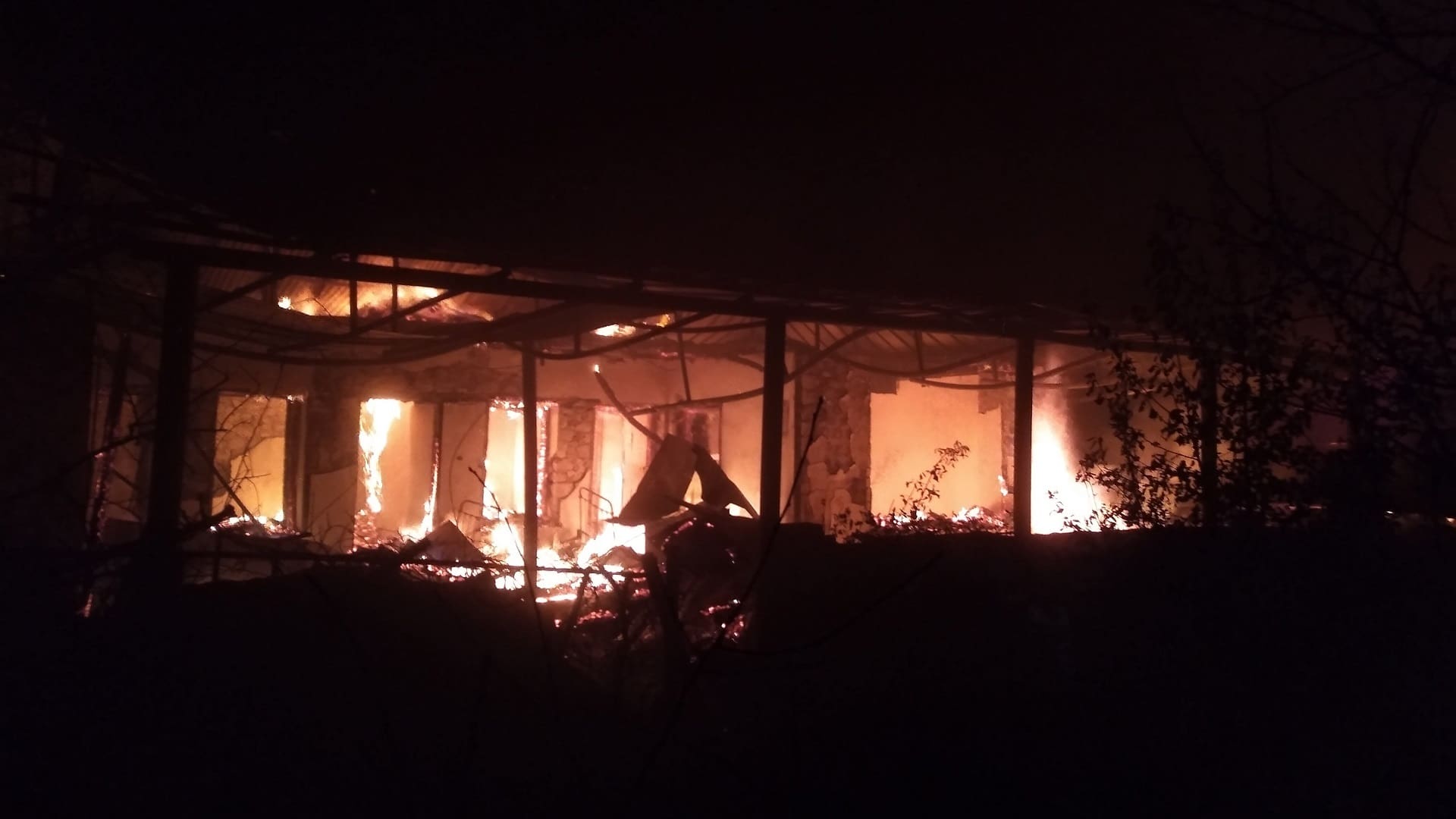As Hungarian Conservative has recently reported, Tristan Azbej, State Secretary in Charge of Aiding Persecuted Christian Communities, announced in a recent Facebook post that, following the negotiations and at the church’s request, the Ministry of Foreign Affairs and Trade, through Hungary Helps Program donated 40 million forints to the Armenian Red Cross to support their humanitarian programs. From the support, the organization assists Armenians who were forced to move from the Karabakh region to Armenia due to the conflict raging there for three decades.
The State Secretary added:
‘Due to the armed escalation of the last few weeks, followed by a deadly industrial disaster in Stepanakert, tens of thousands of Armenian people left their homes and settled in Armenia, where their care presents serious challenges. The Hungarian assistance aims to contribute to the region’s stability by helping the civilian victims of the conflict and the fuel warehouse explosion. The position of Hungary and the Hungarian government regarding the Karabakh conflict is also clear and decisive: peace is the only sustainable solution in the region.’
The State Secretary highlighted that the Hungary Helps Programme has a history of supporting Armenian communities in Armenia and the Middle East, where it has assisted Armenian Christian communities impacted by the war in Syria and Iraq, as well as the economic crisis in Lebanon. These grants contributed to the resumption of diplomatic relations between Hungary and Armenia in 2022.
The Hungarian aid agency, in its statement, also announced that ‘in view of the fact that most of the communities involved are Christian, the Hungarian Lutheran Church has joined the aid agency’s solidarity action to share our thoughts, sympathy, and efforts to alleviate the suffering of our Armenian brothers and sisters.’
In Two Weeks, Nagorno-Karabakh’s Cities Already Become ‘Ghost Towns’
On 19 September, Nagorno-Karabakh fell to Azerbaijani troops following a lightning offensive preceded by a nine-month blockade that starved the area of supplies. Nagorno-Karabakh is inside the borders of Azerbaijan but has been controlled by Armenian separatists since the collapse of the Soviet Union in 1991.
In two weeks, more than 100,000—out of the estimated 120,000 population—Armenians were forced to flee from Nagorno-Karabakh to Armenia.
Marat, a 22-year-old from Askeran in Nagorno-Karabakh, told The New Humanitarian: ‘They starved us, terrorized us, shelled us. They want to force us to take their citizenship, which we don’t want because, honestly, given how they treat their people and our decades of war, who would want that.’
When the United Nations mission—the first in the region in 30 years—arrived in Nagorno-Karabakh a week ago, the territory had already become ‘ghost towns,’ as Stephane Dujarric, the spokesperson for the UN secretary-general, described its cities. In footage aired by the Al Jazeera TV channel, the central square in Stepanakert appears empty, strewn with litter, abandoned prams, and children’s scooters. According to a UN report about the mission’s visit, ‘As few as 50 to 1,000 ethnic Armenians are reported to be left in the Karabakh region of Azerbaijan after the exodus of recent days saw more than 100,000 flee’.
Hov Nazaretyan on Twitter: “latest footage from Stepanakert’s central square pic.twitter.com/x8CKf366HJ / Twitter”
latest footage from Stepanakert’s central square pic.twitter.com/x8CKf366HJ
Karabakh Armenians’ Existence Was Ended on 19 September
As Dr András Rácz, senior research fellow at the German Council on Foreign Relations and professor at the Corvinus University of Budapest, explained in the Heti Válasz podcast, after the 2020 Nagorno-Karabakh war, which lasted for 44 days, seven counties surrounding Nagorno-Karabakh came under Azeri control. Subsequently, Russian peacekeepers were supposed to control and keep open the Lachin Corridor, which connects the territory with Armenia. Dr Rácz added that it was predictable that the conflict would break out again because,
since last fall, Azerbaijan has kept the Karabakh territories under a partial blockade by blocking the Lachine Corridor.
Dr Rácz went on to point out that the Azeri special forces were disguised as environmental activists and were able to push back the Russian peacekeepers. According to experts, there were several reasons why the Russian forces didn’t fight back against the Azeri forces. One reason that might explain is that the Russian leadership didn’t like that the Armenian government started to lean towards the West. Armenia recently held military exercises with the Americans on its territory, and Prime Minister Pashinyan’s wife went to Ukraine and expressed her solidarity with the Ukrainians.
As Bálint Kovács, historian and head of department at the Pázmány Péter Catholic University, phrased it, the existence of the Karabakh Armenians was not only questioned but ended on 19 September.
Armenian Christians Forced to Leave Behind Rich Cultural and Religious Heritage Preserved for Centuries in Nagorno-Karabakh
A Religion Unplugged article from September 2023 pointed out that the ongoing war in Nagorno-Karabakh extends beyond a mere territorial dispute. This region has strong religious and cultural ties to Christian Armenians and is home to several monasteries and other sacred sites dating back to the Middle Ages. The conflict between Azerbaijan and Armenia is not limited to Nagorno-Karabakh, as Armenians in Azerbaijan have suffered from pogroms in the past.
Between 1997 and 2006, the Azerbaijani government launched a devastating campaign against Armenian heritage sites in Nakhichevan, an Azerbaijani enclave separated from the mainland of the country by Armenian territory. As a result of the pillage, 89 churches, along with thousands of carved memorial stones in the Djulfa cemetery, the largest medieval Armenian burial site, were destroyed.
Armenia was the first country in the world to adopt Christianity as its state religion in the early 300s.
According to the tradition, St Thaddeus preached there in the first century. The Armenian Apostolic Church holds a special place in the hearts of the Armenian people, with about 97% of the country’s citizens belonging to this Eastern Christian denomination, which is in communion with other Orthodox churches. Despite the passage of many centuries, Christians in this region, including Nagorno-Karabakh, where 90% of the population is Christian, continue to face a crisis.
In a column for The Christian Post earlier this month, Hedieh Mirahmad, leader of the Resurrect Ministry, wrote the following on the issue:
‘The destruction of Christian communities like Nagorno-Karabakh is a tragedy with profound consequences. These communities, which have preserved their faith and heritage for centuries, are now facing extinction in many parts of Asia, the Middle East, and Africa. The events of 11 September 2001 and their aftermath have played a pivotal role in exacerbating these challenges, from increasing religious tensions to regional instability and mass migration.’
The Premier Christian article highlighted that for Armenians, leaving Nagorno-Karabakh is not just a geographical relocation, but also the act of severing ties with their deeply engrained cultural and religious heritage. Leaving these landmarks not only means abandoning a significant part of their identity, but also raises concerns and fears about how they will be able to preserve the rich heritage after they leave.
Related articles:








